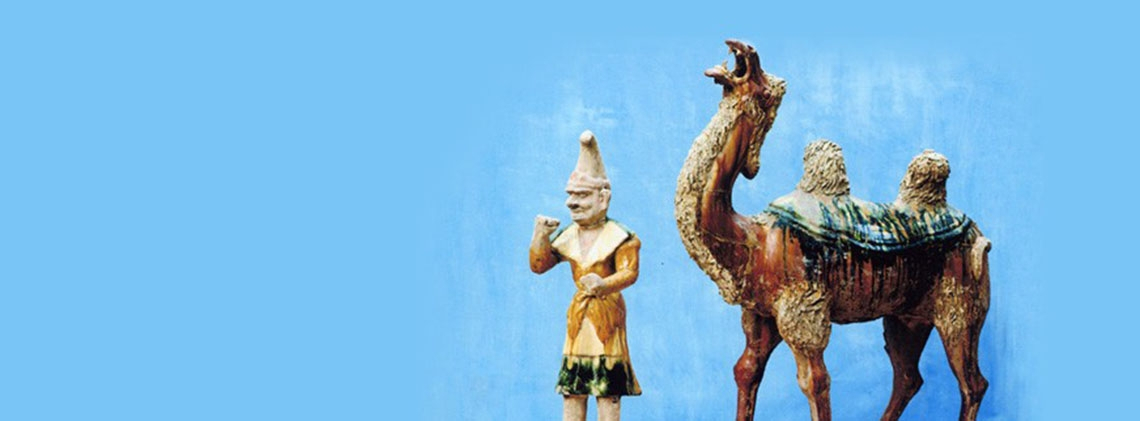
Uighur Culture
Splendid
Chi Culture
Topic
Uighur Culture
The Xinjiang Uyghurs in modern China are descendants of the Uighur (or Uygur) ethnic group. The Uighurs were a nomadic tribal people whose economy relied predominantly on animal husbandry. In 745, the Uighurs established their own kingdom, or khaganate, on the Mongolian Plateau. The kingdom, which lasted about one hundred years, grew into a powerful regime, and became a vassal state of the Tang dynasty (618–907). It played a significant role in the expansion and consolidation of territory under the Tang dynasty, as well as in the development of grassland nomadic culture in China.
The culture of the Uighurs was an important and integral part of the ethnic cultures in ancient China. Its influence extended to northern China and the Western Regions during the Five Dynasties (907–960), the Northern and Southern Song dynasties (960–1279).
In terms of spoken and written language, the Uighurs spoke Turkic, an influential language in history, and the foundation of the modern-day family of Turkic languages. More than thirty ethnic groups speak a modern Turkic language; these include Uyghur, Kazakh, Turk, Uzbek, Tatar, Azerbaijani, Turkmen, Kyrgyz, and Salar. The written language of the Uighurs is essentially the Old Turkic script; in some cases, however, upper-class Uighurs also knew Chinese and Sogdian.
Shamanism was the religion of early Uighurs. They believed that the universe was divided into upper, middle, and lower levels. The upper level belonged to the spirits and deities, humans resided in the middle level, and the lower level was controlled by ghosts and demons. Shamans were the intermediaries between humans and spirits. Around the time that the Uighur khaganate was established, the Uighurs converted to Manichaeism, which claimed that good spirits (light) and evil spirits (darkness) coexisted in the universe and that people would be rewarded after death based on how they led their lives. Manichaeism was introduced from the Western Regions into the Central Plain region of China where it was then transmitted to the Uighur Khaganate. In 763, Mou-yü Khagan (Khagan Tengri Bögö, 759–780) adopted Manichaeism as the official religion of the kingdom. Emperor Daizong (Li Yu, r. 762–779) of the Tang dynasty ordered the construction of the Manichaean Dayun Guangming Monastery in Chang’an at the request of the Uighur Khaganate. Other Manichaean monasteries were also built in Jingzhou (modern Gong’an county, Hubei), Yangzhou (modern Yangzhou, Jiangsu), and Yuezhou (modern Shaoxing, Zhejiang) in the Yangtze River valley, as well as in Henan fu (superior prefecture, administrative seat Luoyang, Henan), and Taiyuan fu (superior prefecture, administrative seat modern Taiyuan, Shanxi). It is apparent from this construction that Manichaeism thrived in the Central Plain area.
The people of the Uighur khaganate made their living primarily by animal husbandry. Cattle and sheep formed the majority of their livestock, but horses were the most valuable and were produced in astounding numbers. Uighur tribes, such as the Tongluo (Toŋra), Baximi (Basmy), Geluolu (Qarluq, or Karluk), and Bayegu (Bayїrqu) were celebrated for their horses. In addition to animal husbandry, hunting was also practiced. The valleys between the Orkhon River and the Selenga River provided agricultural land on which barley, wheat, and corn were primarily grown.
The Uighur khaganate also undertook commercial enterprises which brought them in contact with neighboring cultures. Through this contact the Uighurs absorbed cultural elements from the Central Plain and the Western Regions. Cultural influence by neighboring states can be glimpsed in the variety of the Uighur garments, such as clothing of the Tang dynasty Han people and those called Hu costumes of the Western Regions.
The Uighur khaganate officially collapsed in 840. After the fall of the kingdom, some people moved to the Central Plain region; the remaining people were divided into three groups, or branches, and moved westward. They later formed three regimes—the Ganzhou Uighur khanate, the Gaochang Uighur kingdom (Kingdom of Qocho), and the Qara Khanid khanate. Most of the Gaochang and Qara Khanid Uighurs integrated with the neighboring ethnic groups, and, over a long time, formed the modern-day Uighurs. The modern-day Yugu (Yughur) echnic group grew out of integration between the Uighurs of Ganzhou and the people living along the Gansu Corridor. The ancient Uighur culture has left a discernible mark on both the modern Uighur and Yugu groups.



